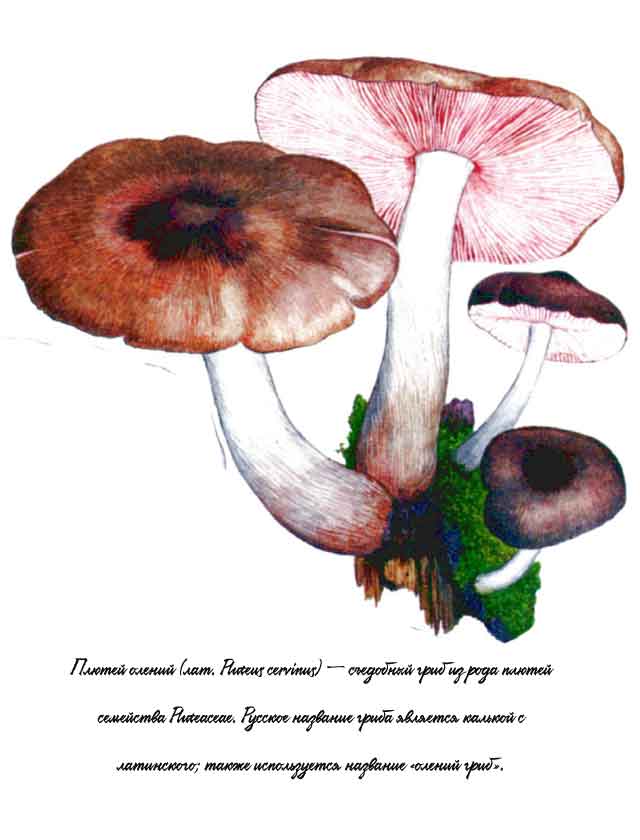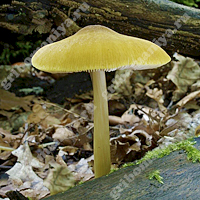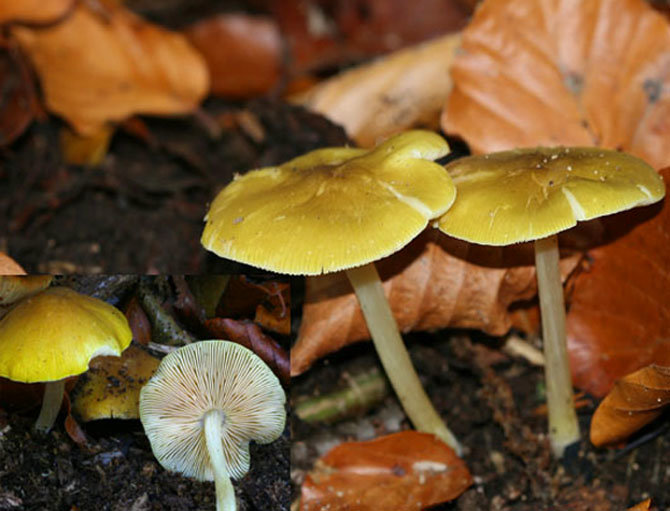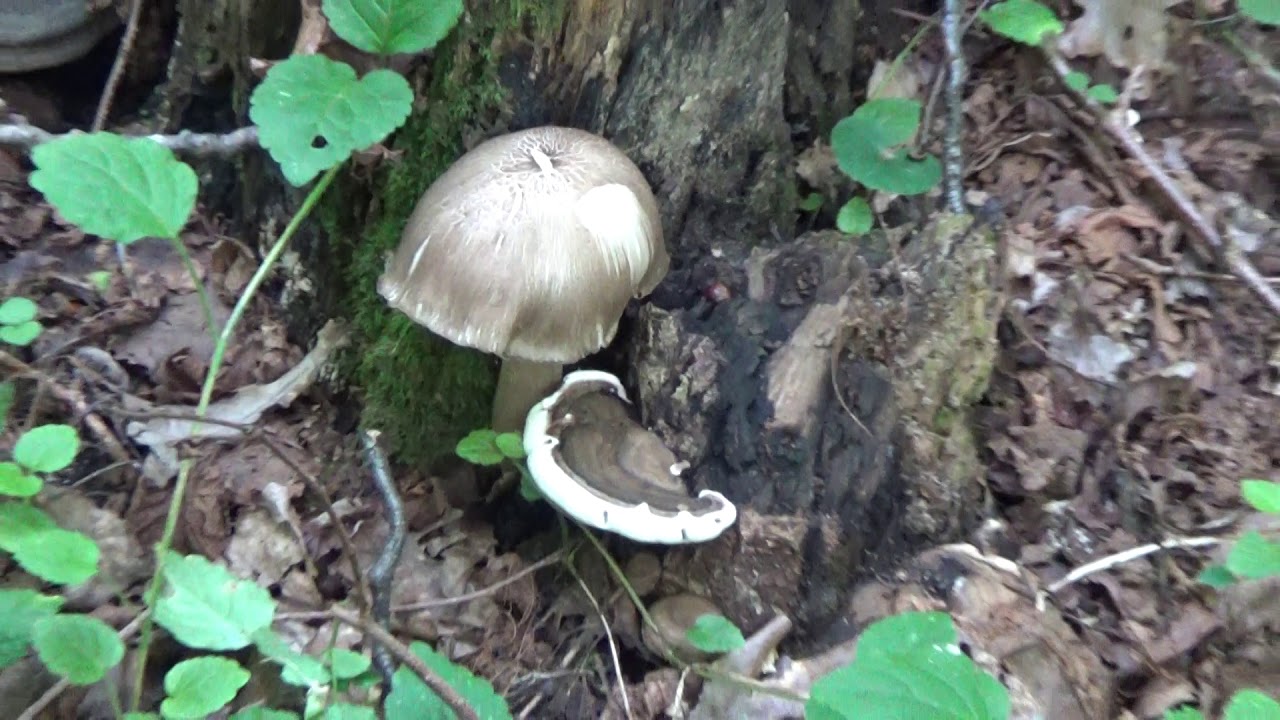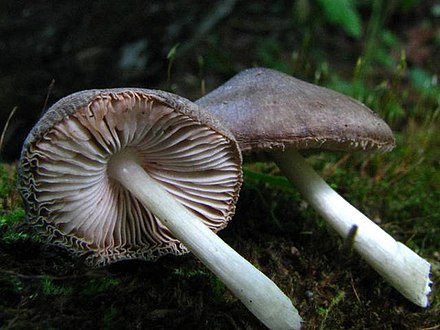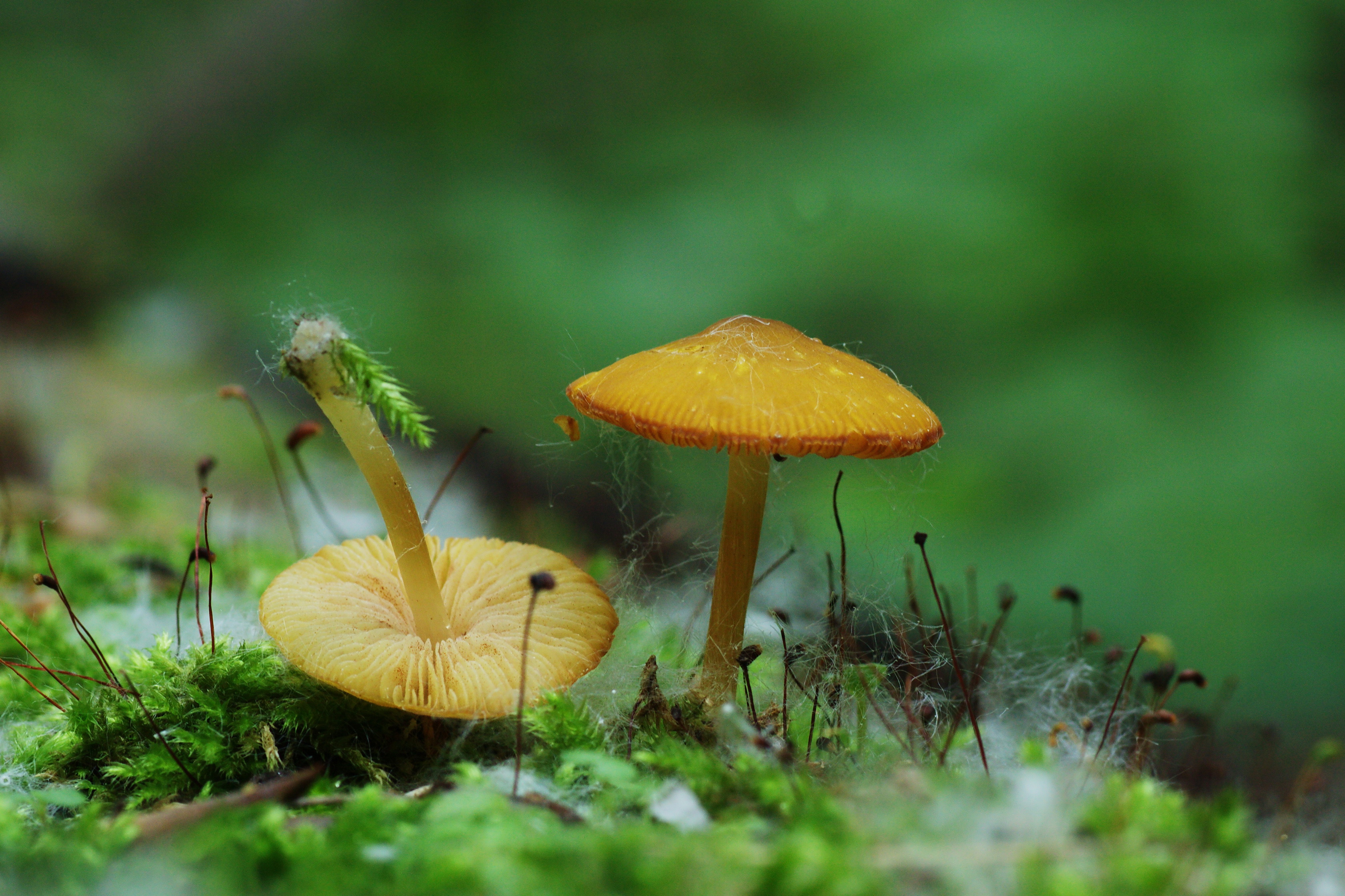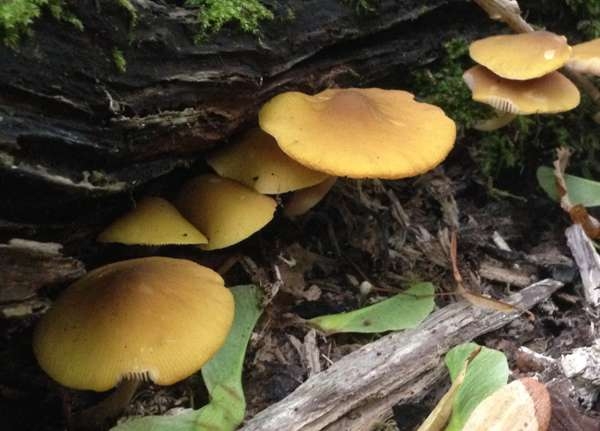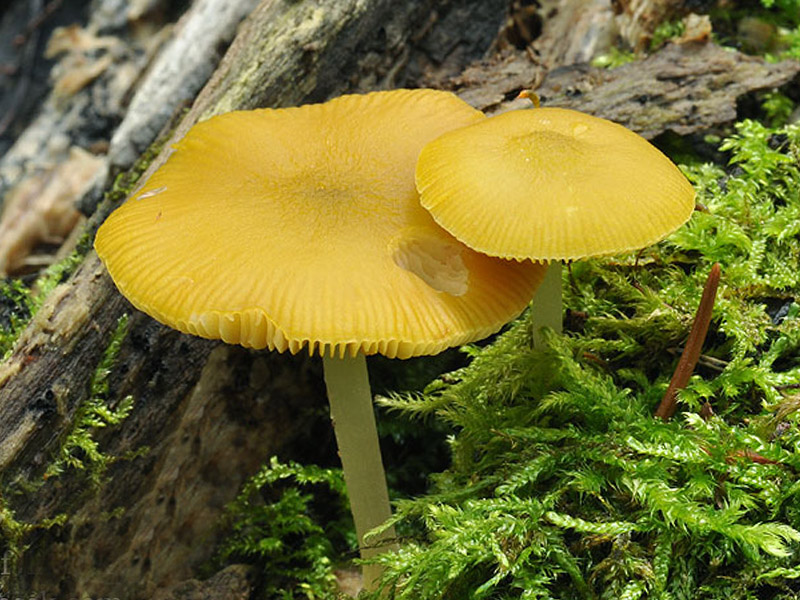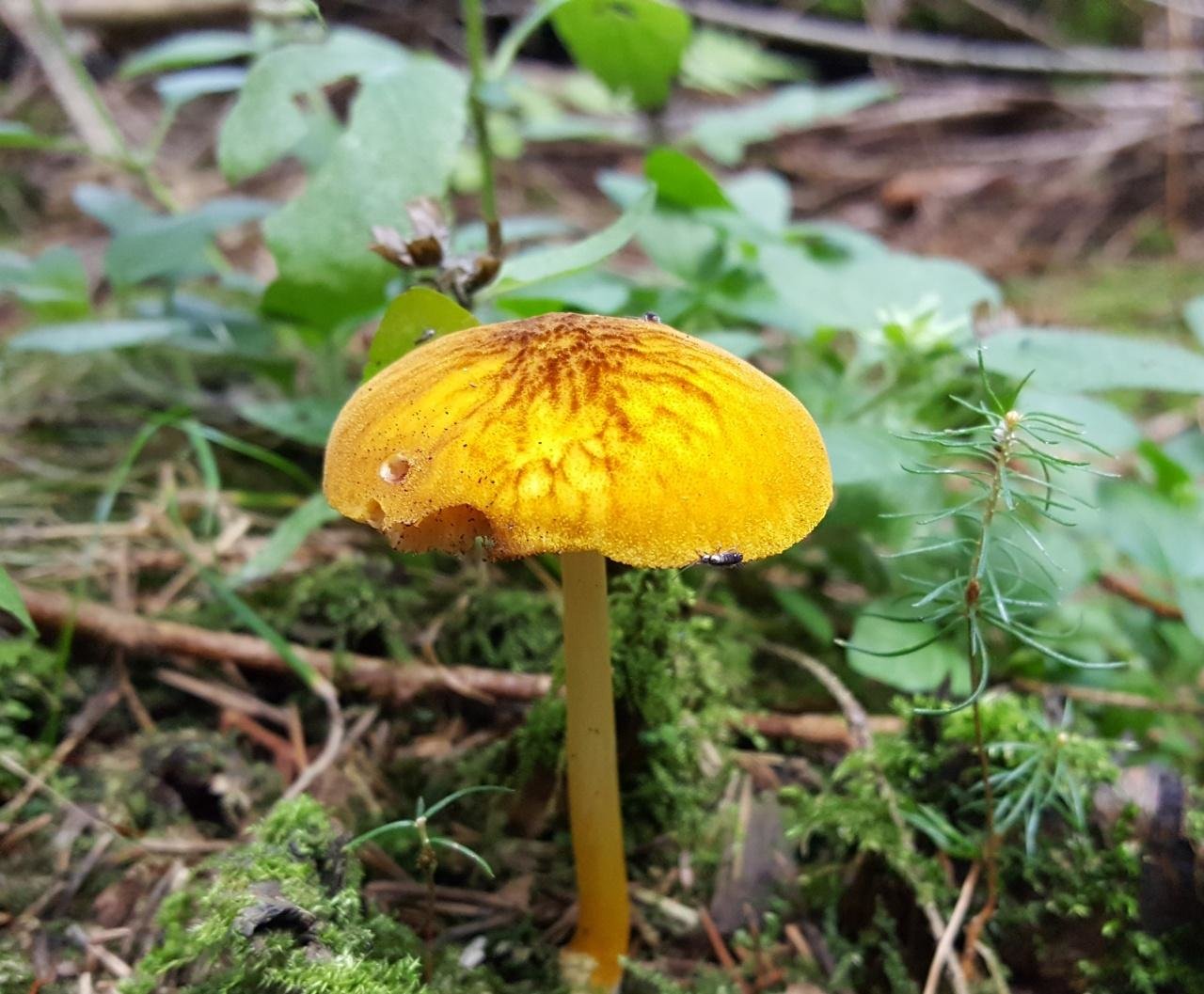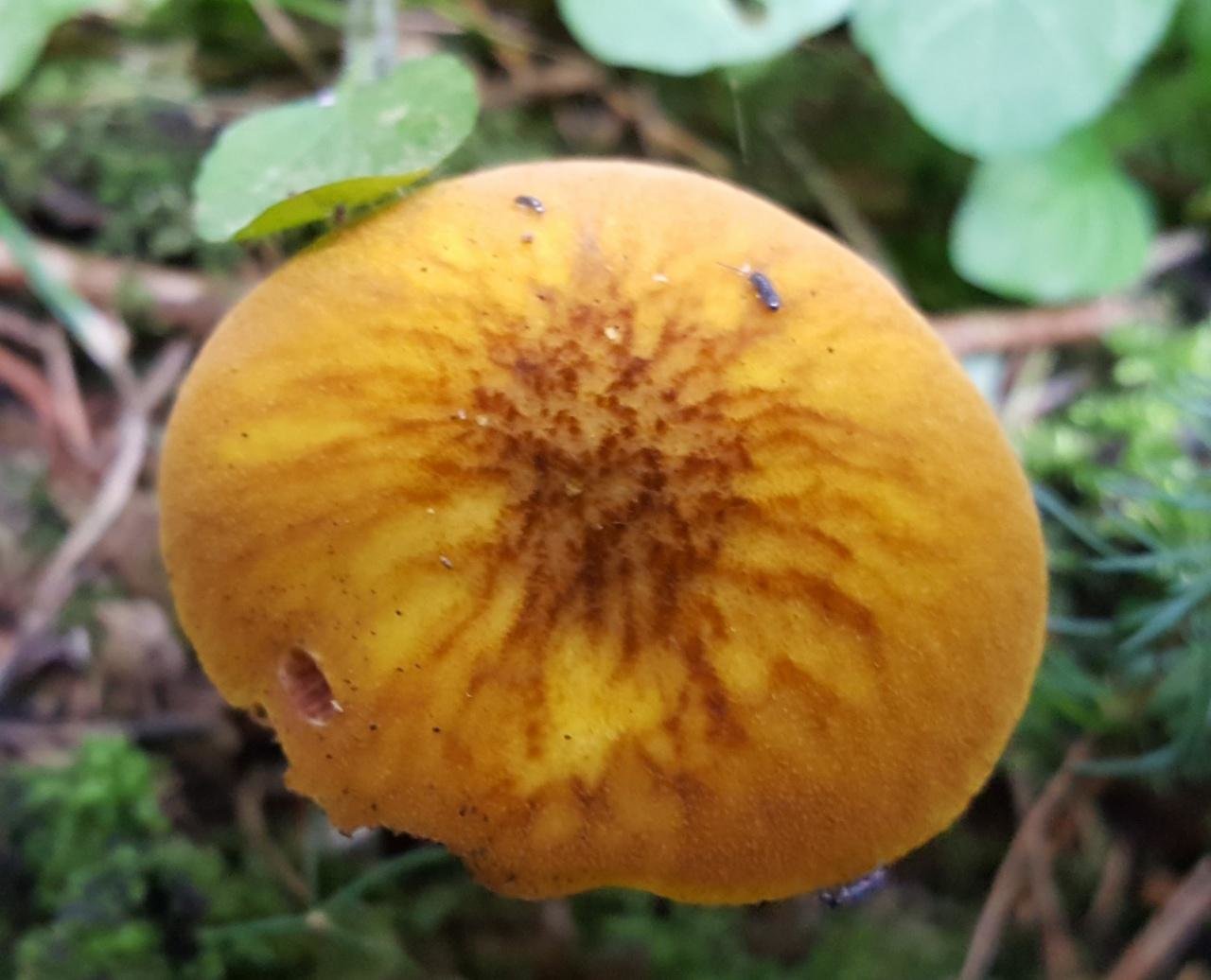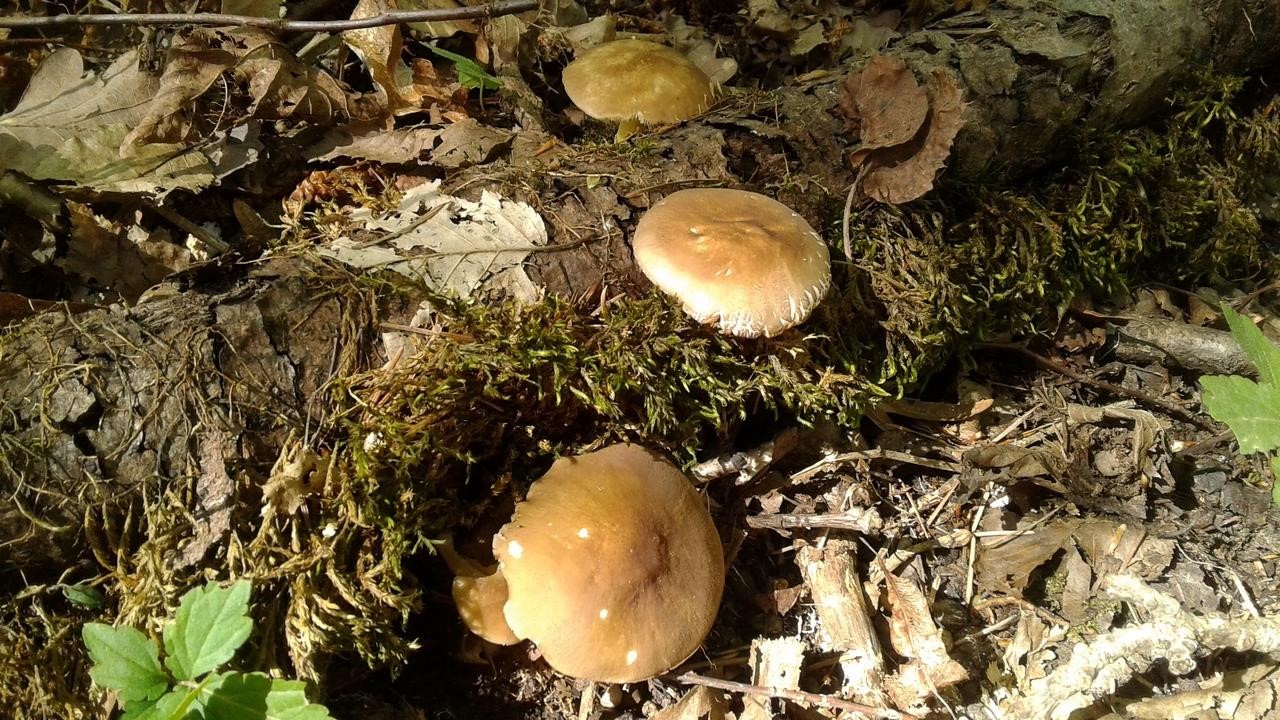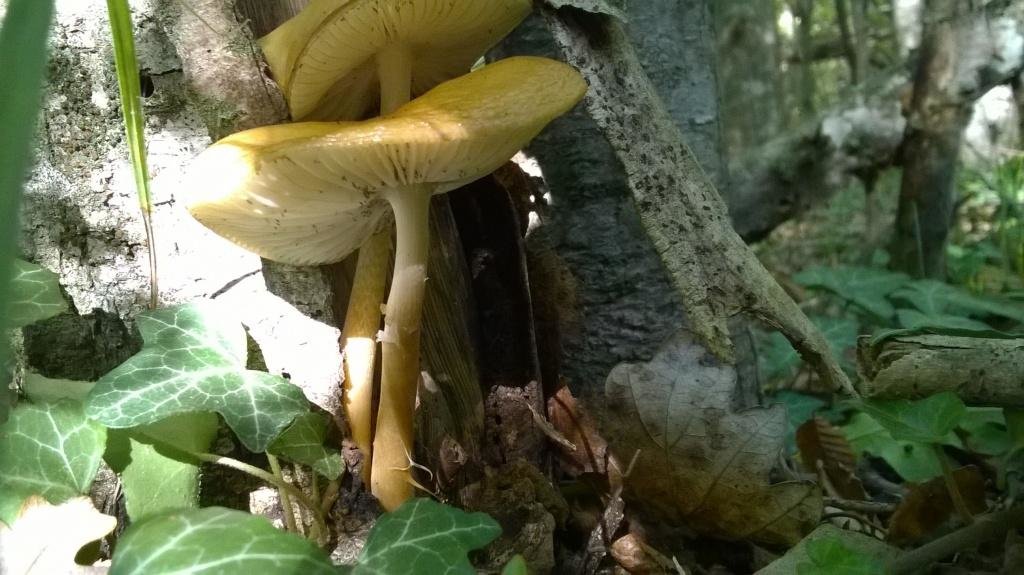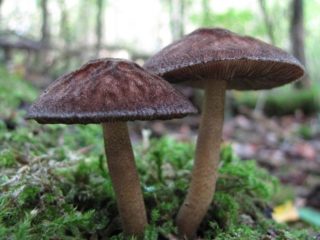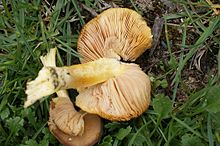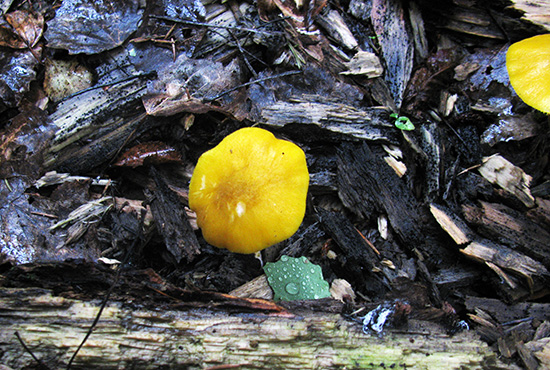Taxonomy
Synonyms:
- Agaricus chrysolithus Batsch 1783, nom. illeg.
- Agaricus leoninus Schaeff. 1774basionym
- Agaricus sororiatus P. Karst. 1868
- Pluteus fayodii Damblon, Darimont & Lambinon 1959
- Pluteus flavobrunneus J. Favre 1960, nom. inval.
- Pluteus luteomarginatus Rolland 1889
- Pluteus sororiatus (P. Karst.) P. Karst. 1879 - A heap of clown
A bunch of clues (P. sororiatus) is considered a synonym, but a number of authors recognize it as an independent species, noting significant differences both in morphological characteristics and in ecology. Pluteus luteomarginatus, in this case, is considered a synonym for heapy spit, not lion-yellow.
Homonyms:
- Pluteus leoninus sensu Rea (1922), Cooke is a synonym for Pluteus aurantiorugosus (Trog) Sacc. 1896 - Orange-wrinkled rogue
- Pluteus leoninus sensu Singer (1930), Imai (1938), Romagn. (1956) - synonym for Pluteus chrysophaeus (Schaeff.) Quél. 1872 - Plyutey gold-colored
Definitioner
- rare (rare smell)
-
In mycology, a rare smell, English. "Raphanoid", is interpreted very loosely and often denotes any smell of raw root vegetables, including potato, ie. not necessarily as sharp, sharp, and crisp as black or white radish.
- Basidia (Basidia)
-
Lat. Basidia. A specialized structure of sexual reproduction in fungi, inherent only in Basidiomycetes. Basidia are terminal (end) elements of hyphae of various shapes and sizes, on which spores develop exogenously (outside).
Basidia are diverse in structure and method of attachment to hyphae.
According to the position relative to the axis of the hypha, to which they are attached, three types of basidia are distinguished:
Apical basidia are formed from the terminal cell of the hypha and are located parallel to its axis.
Pleurobasidia are formed from lateral processes and are located perpendicular to the axis of the hypha, which continues to grow and can form new processes with basidia.
Subasidia are formed from a lateral process, turned perpendicular to the axis of the hypha, which, after the formation of one basidium, stops its growth.
Based on morphology:
Holobasidia - unicellular basidia, not divided by septa (see Fig. A, D.).
Phragmobasidia are divided by transverse or vertical septa, usually into four cells (see Fig. B, C).
By type of development:
Heterobasidia consists of two parts - hypobasidia and epibasidia developing from it, with or without partitions (see Fig. C, B) (see Fig. D).
Homobasidia is not divided into hypo- and epibasidia and in all cases is considered holobasidia (Fig. A).
Basidia is the place of karyogamy, meiosis and the formation of basidiospores. Homobasidia, as a rule, is not functionally divided, and meiosis follows karyogamy in it. However, basidia can be divided into probasidia - the site of karyogamy and metabasidia - the site of meiosis. Probasidium is often a dormant spore, for example in rust fungi. In such cases, probazidia grows with metabasidia, in which meiosis occurs and on which basidiospores are formed (see Fig. E).
See Karyogamy, Meiosis, Gifa.
- Pileipellis
-
Lat. Pileipellis, skin - differentiated surface layer of the cap of agaricoid basidiomycetes. The structure of the skin in most cases differs from the inner flesh of the cap and may have a different structure. The structural features of pileipellis are often used as diagnostic features in descriptions of fungi species.
According to their structure, they are divided into four main types: cutis, trichoderma, hymeniderma and epithelium.
See Agaricoid fungi, Basidiomycete, Cutis, Trichoderma, Gimeniderm, Epithelium.
- Pileipellis (Pileipellis)
-
Lat. Pileipellis, skin - differentiated surface layer of the cap of agaricoid basidiomycetes. The structure of the skin in most cases differs from the inner flesh of the cap and may have a different structure. The structural features of pileipellis are often used as diagnostic features in descriptions of fungi species.
According to their structure, they are divided into four main types: cutis, trichoderma, hymeniderma and epithelium.
See Agaricoid fungi, Basidiomycete, Cutis, Trichoderma, Gimeniderm, Epithelium.
- Cutis
-
The type of cap skin, consists of creeping non-gelatinized hyphae located parallel to the surface. The surface of the cap looks smooth.
Lat. Cutis.
See Gifa.
Practical value
The genus contains edible species; mushroom pickers are best known for deer roaches (Pluteus cervinus(Pluteus umbrosus), dark-edge rogue (Pluteus atromarginatus). Inedible species include such species as velvety-footed sticks (Pluteus plautus), noble rogue (Pluteus plautus). Some common species in the special literature are characterized as "little-known edible mushrooms", but some authors classify them as inedible - dwarf cod (Pluteus nanus), venous crimson (Pluteus phlebophorus). In many species, nutritional or toxic properties have not been studied and are considered inedible.
For several species, the possibility of medicinal use is being studied. In experiments on mice, it was found that the extract of polysaccharides from deer spit suppresses the growth of malignant tumors, anti-cancer and immunostimulating effects were found in dwarf spit, lion-yellow (Pluteus leoninus), orange-wrinkled (Pluteus aurantiorugosus).
A small number of poisonous (hallucinogenic) representatives are known to contain psilocybin. In Central Africa, a mushroom little known to science with a pungent odor and bitter taste is used by the Banza and Eala peoples, the local names of the mushroom, respectively, abanda and Losulu... It has been described as a species of stag spine called Pluteus cervinus var. ealaensis Beeli 1928, detailed information about it in the literature was absent for a long time. In 2010, a modern description was published and the species was named Pluteus losulu... In the 1980s and 1990s, psilocybin was found in willow spit (Pluteus salicinus), blue (Pluteus cyanopus), P. nigroviridis and P. glaucus.
Description
The hat is 2-4 centimeters in diameter, thin-fleshy, from broad-conical or semicircular to widespread, with a small tubercle or depression in the center. The surface is velvety, smooth, wrinkled in the center, radial-venous, matte, from bright yellow to honey, amber, dark brown or brown. The edge is often grooved.
loose, frequent, up to 0.5 cm wide, pinkish with a yellow tinge or straw-yellow, with age they become pink with a whitish edge.
The leg is 2-7 × 0.2-0.6 cm, cylindrical, central or eccentric, widens towards the base, solid, dense. The surface is straw-yellow or chrome-yellow, whitish in the upper part, smooth, shiny, longitudinally fibrous.
The flesh of the cap is whitish, the legs are yellowish, does not change on the cut, the taste and smell are not expressed.
The remains of the bedspreads are absent, the spore powder is pink.
Spores are smooth, from ovate to broadly ellipsoid, 6-7.5 (8) × 4.5-6 µm.
Thin-walled hyphae with buckles. The skin of the cap is of a cellular structure, consists of rounded or clavate cells measuring 30-60 × 20-40 µm with an elongated base, containing brown pigment.
Basidia are four-spore, 25-40 × 7-10 microns in size, thin-walled, clavate, colorless.
Cheilocystids 25–80 × 10–40 µm in size, of various shapes, thin-walled, colorless, numerous. Pleurocystids 45-100 × 15-45 µm, broad-headed or saccular, thin-walled, colorless.


